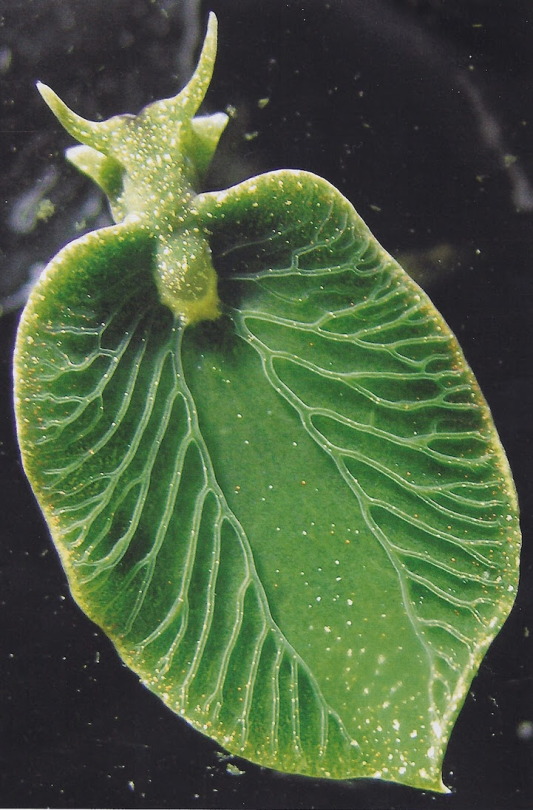Startdoost - Star

More Posts from Startdoost and Others









Elysia chlorotica, also called the “Eastern Emerald Elysia” is a bright green sacoglossa found along the Atlantic coast of North America that's earned the title of “solar-powered sea slug” for its ability to produce its own energy with sunlight and the chloroplasts that it sucks off of algae.
This unusual process, which is similar to photosynthesis, is known as kleptoplasty. Except for a select number of creatures like the adorable “leaf sheep” Costasiella kuroshimae nudibranch, very few non-plant organisms are capable of the phenomenon.
@confidently-regretful
(Sorry to be that guy but) the leaf sheep is not actually a nudibranch, but instead part of the closely related order sacoglossa. Nudibranches are carnivorous while sacoglossa are herbivorous and feed by sucking the sap out of microscopic algae. Many sacoglossa perform a process called kleptoplasty, where they reuse chloroplasts from the algal sap they feed on and implement them into their cells. Some notable examples are the bivalve snails in the family juliidae, the eastern emerald elysia (elysia chlorotica) and obviously the sea sheep. Another slug from the order elysia (elysia rufescens) reuses defensive molecules called kahalalides as well as chloroplasts. Most sacoglossans survive primarily through heterotrophic means (ingesting and digesting) and photosynthesise when food is scarce or unavailable as a last resort. Though research has shown leaf sheep can survive long periods of time with little to no food of heterotrophic or homotrophic (photosynthetic) origin. They store their chloroplasts in cerata, which are structures often found on nudibranches and regularly used for gas exchange or- in blue glaucus’ case- for attack and defence. They also have rhinophores protruding from their face, structures also commonly found on nudibranches, which are chemosensory organs (essentially face tongues) that appear ear like on nudibranches and sacoglossans alike.
To conclude: while leaf sheep are very similar to nudibranches, they belong to the sacoglossan family (which is good because sacoglossans are just as cool) and luckily are not the only animals to photosynthesise.
(I’m researching them for a highschool project and am so obsessed haha)




So not technically a fish but I absolutely love these lil fellas
They’re Nudibranch sea slugs and they all look so pretty!!!!!


Some notable exception are the Sea Bunny (left) which is just the most adorable thing I’ve ever seen
And the Leaf Sheep (right), which is the only animal known to be capable of photosynthesis!
i am SUCH a nudibranch fan oh my god. actual underwater fae creatures. beloved little freak animals. i want to eat them like cereal


I just discovered the blanket octopus. Would you do a fact on them if not already done? 👀
Sure friend! I am a daily fish fact account only, but I simply couldn't not say something about the magnificent blanket octopus :)

Here is a blanket octopus female! How do I know that? Simple: the males of the species only reach about 2 and a half centimeters, while the females can be as large as two meters long! The species is named after this gorgeous lady's webs that connect to her arms.
"Blanket octopus" refers to four different species actually! And they're all immune to the extremely venomous Portuguese man o' war, young females and males will in fact rip out a dangerous and venomous tentacle from these animals to defend themselves! It is extremely interesting and exciting what kinds of things octopuses are capable of :)

just found out that giant squid meat is chock fucking full of ammonium ions to increase buoyancy so they would taste fucking disgusting if you tried to make calamari out of them. i mean i wasn't planning on it but a girl can dream right? nobody talk to me



The sex of human and other mammal babies is decided by a male-determining gene on the Y chromosome. But the human Y chromosome is degenerating and may disappear in a few million years, leading to our extinction unless we evolve a new sex gene. The good news is two branches of rodents have already lost their Y chromosome and have lived to tell the tale. A 2022 paper in Proceedings of the National Academy of Science shows how the spiny rat has evolved a new male-determining gene.
Continue Reading.
Daily fish fact #786
Peacock flounder!

It only takes a peacock flounder two to eight seconds to change its colour and blend into its surroundings! They study their environment and then with the use of pigment-containing cells, chromatophores, alter the patterns on their skin. When not camouflaged, these fish have striking blue rings.
-
 sharky-sea-l0v3r reblogged this · 1 year ago
sharky-sea-l0v3r reblogged this · 1 year ago -
 aggelols reblogged this · 1 year ago
aggelols reblogged this · 1 year ago -
 nerdstify reblogged this · 1 year ago
nerdstify reblogged this · 1 year ago -
 nerdstify liked this · 1 year ago
nerdstify liked this · 1 year ago -
 shiramegomaru reblogged this · 1 year ago
shiramegomaru reblogged this · 1 year ago -
 shiramegomaru liked this · 1 year ago
shiramegomaru liked this · 1 year ago -
 startdoost reblogged this · 1 year ago
startdoost reblogged this · 1 year ago -
 startdoost liked this · 1 year ago
startdoost liked this · 1 year ago -
 peachyfuck18 liked this · 1 year ago
peachyfuck18 liked this · 1 year ago -
 beatriz2009silva liked this · 1 year ago
beatriz2009silva liked this · 1 year ago -
 death-mothblog reblogged this · 1 year ago
death-mothblog reblogged this · 1 year ago
